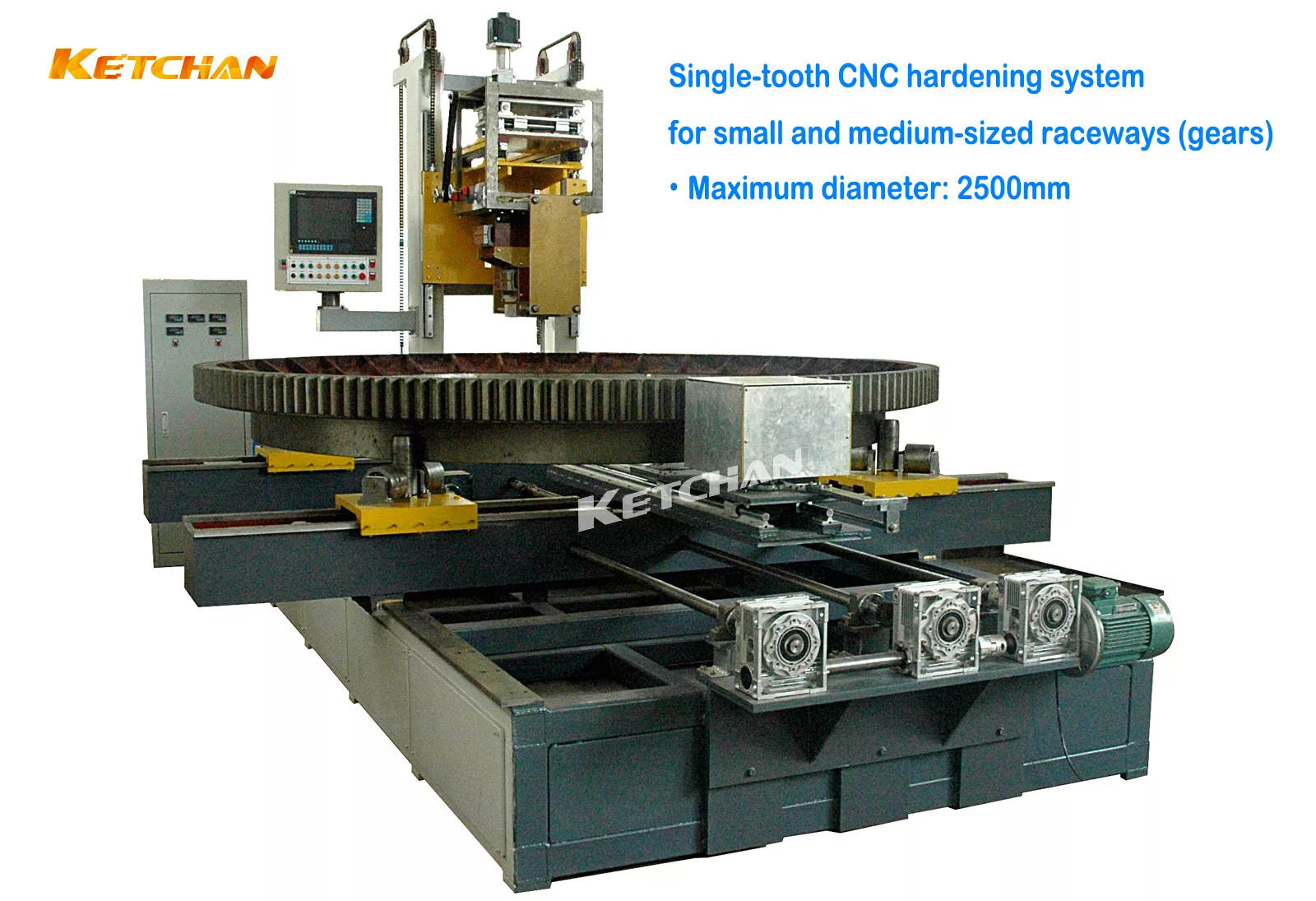
Gear hardening is a process that improves the wear resistance and fatigue strength of gears by creating a hardened layer on the surface of the gear teeth. There are different methods of gear hardening, such as induction hardening, carburizing, nitriding, and flame hardening.
- Induction hardening uses an electric current to heat the gear teeth in a magnetic field, then quenches them with water or oil. This method is fast, precise, and energy-efficient, but it requires special equipment and can cause distortion or cracking.
- Carburizing is a type of case hardening that introduces carbon into the surface layer of low-carbon steel gears by heating them in a carbon-rich atmosphere. This method produces a deep and uniform case with high hardness and toughness, but it takes a long time and can cause dimensional changes.
- Nitriding is another type of case hardening that introduces nitrogen into the surface layer of alloy steel gears by heating them in a nitrogen-rich atmosphere. This method produces a thin and hard case with high wear resistance and fatigue strength, but it can reduce the core ductility and toughness.
- Flame hardening uses a direct flame to heat the gear teeth, then quenches them with water or air. This method is simple, cheap, and flexible, but it can cause uneven heating, oxidation, or warping.
Induction hardening of gears compared with other hardening methods
- Induction hardening is fast, precise, and energy-efficient, but it requires special equipment and can cause distortion or cracking.
- Induction hardening can harden only the surface of the gear teeth, leaving the core soft and ductile. This can improve the fatigue and impact strength of the gears, but it can also reduce the wear resistance and core hardness.
- Induction hardening can harden specific areas of the gear teeth, such as the root or the flank, depending on the inductor design. This can optimize the hardness pattern for different gear applications, but it can also create electromagnetic end and edge effects.
- Induction hardening is suitable for gears with large modules and complex geometries, such as external or internal gears, worm gears, racks, and sprockets. It is not very suitable for small and fine-pitch gears, because the tooth-by-tooth technique is difficult to apply.
